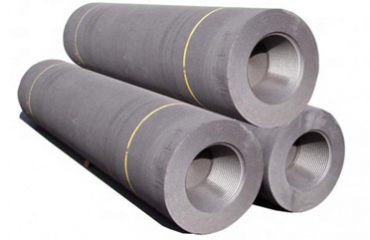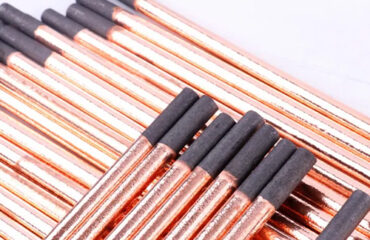Graphite anode is a kind of graphite plate, block or bar used as anode of electrolytic cell in electrolysis industry. There are two kinds of electrolysis processes using graphite anode, one is water solution electrolysis, the other is molten salt electrolysis. The chlor alkali industry, which produces caustic soda and chlorine by electrolysis of salt solution, is the largest user of graphite anode. In addition, graphite anodes are also used in some electrolyzers for the production of magnesium, sodium, tantalum and other light metals and rare metals by molten salt electrolysis.
In the process of electrolyzer operation, graphite anode is mainly consumed by the following forms of corrosion. First of all, because the electrolyte contains a large number of hydroxyl ions and a small amount of sulfate and hypochlorite ions as impurities, these ions will discharge on the anode to produce oxygen. The primary oxygen produced oxidizes graphite into carbon dioxide or carbon monoxide, which accounts for more than half of the total corrosion of graphite anode. Secondly, with the deepening of oxidation, the bonding between the particles of graphite anode body is gradually destroyed, and the loose particles on the surface layer of graphite anode will drop slag under the erosion of salt water. The anode is thinned by oxidation and slag dropping, so it is necessary to stop the tank and replace it to a certain extent. This kind of residual electrode loss accounts for more than 1 / 4 of the total consumption of graphite anode. The consumption of oxidation and slag dropping is related to the porosity of graphite anode. High porosity and high consumption. The most commonly used method to reduce the porosity of graphite anode is to impregnate the whole or root with linseed oil, tung oil and other dry oils before use.


